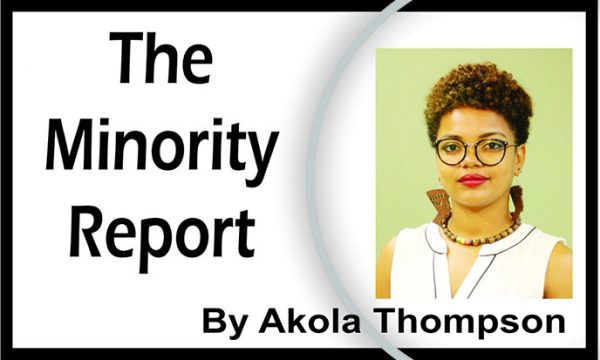 Due to a history of violent colonialist expansion, Guyana is a diverse mix of Indigenous, African, East Indian, Chinese, Portuguese and mixed-race people, resulting in a population of 786,559 persons, of which 78,500 identify as Indigenous (2012 Census). From the beginning, colonial responses towards Indigenous people have for the most part been both protectionist and discriminatory. Evidence of this is seen particularly in their refusal to codify laws related to Indigenous land rights. This has contributed towards the post-independence governments being able to utilise their powers to increase the amount of logging and mining licences they give out, even as this contradicts the 2006 Amerindian Act which specifies that permissions for small and medium-scale mining activities need to be granted by the village council and not State agencies. While mining in the early 1980s was largely small-scale and done by individual miners, the industry rapidly expanded in the late 1990s, resulting in mining becoming “the main source of economic growth and the leading earner of foreign exchange,” (IDB) as the industry for non-renewable resources such as gold, diamonds, bauxite, and now oil rapidly expanded.
Due to a history of violent colonialist expansion, Guyana is a diverse mix of Indigenous, African, East Indian, Chinese, Portuguese and mixed-race people, resulting in a population of 786,559 persons, of which 78,500 identify as Indigenous (2012 Census). From the beginning, colonial responses towards Indigenous people have for the most part been both protectionist and discriminatory. Evidence of this is seen particularly in their refusal to codify laws related to Indigenous land rights. This has contributed towards the post-independence governments being able to utilise their powers to increase the amount of logging and mining licences they give out, even as this contradicts the 2006 Amerindian Act which specifies that permissions for small and medium-scale mining activities need to be granted by the village council and not State agencies. While mining in the early 1980s was largely small-scale and done by individual miners, the industry rapidly expanded in the late 1990s, resulting in mining becoming “the main source of economic growth and the leading earner of foreign exchange,” (IDB) as the industry for non-renewable resources such as gold, diamonds, bauxite, and now oil rapidly expanded.
Data from a Monitoring Programme by the Amerindian People’s Association, (2018) found that between 2013-2018, there were more than 250 observations of activities that are harmful, illegal and violated Indigenous rights in Marudi. It also observed “more than 380 impacts on the environment and way of life, including deforestation, water pollution, destruction of hunting and fishing grounds, and damage to cultural heritage, among others, with almost 50% of the impacts observed by monitors being caused by mining activities.” Mining operations have contributed towards negative externalities such as the pollution of waterways, mercury poisoning, and depletion of fish stocks and wildlife populations. In addition to this monitoring programme, these impacts were corroborated by studies undertaken by the World Wildlife Fund, the Ministry of Natural Resources, the Environmental Protection Agency, and the Guyana Geology and Mines Commission.
Marudi raises interesting points about the environmentalism of the poor and how they can often struggle to defend their livelihoods. Given social beliefs and ethnic stereotypes surrounding Indigenous people, their rights are often disrespected as they are seen as being incapable of managing resources efficiently. The heavy focus on economic growth above all else has seen further marginalisation of vulnerable groups, particularly women who tend to be on the frontline of such crises. Given the expansion of mining operations in the Marudi area, the society and lives of Indigenous women have been dramatically reshaped, even as things such as their contributions towards the maintenance of their community’s economies remain intact. Violence against Indi-genous women, and lack of support regarding the burden of caring work, matched with the varying ecological and economic crises they face due to mining, has resulted in them continuing to experience violence from both State and non-State actors.
Currently, specific policies to impact Indigenous people such as the 2006 Amerindian People’s Act are not implemented as there is a lot of pushback against ethnic-specific policies. However, given the inequality amongst Indigenous populations, specific public policies must focus on the needs of specific populations. This lack of implementation around ethnic-specific policies matched with extractive industries that are in contradiction to traditional sustainable ecosystems has contributed towards the continued marginalisation of Indigenous communities and degradation of the land upon which they live and subsist. As a developing country, Guyana’s environmental policies need to have local indigenous women within the policymaking process and ensure that there are more participatory processes that allow varying perspectives. Doing this will ensure that there are more safeguards for women’s protection. Efforts that mainstream gender in global climate governance and policy will ensure that these actors are able to push for their interests at community, local and national levels despite their geographical locations, class, race or gender.
When it comes to climate change policies, women can be stereotyped either as being vulnerable or more likely to care for the environment. This is important to note as the politics of gender and nature are intertwined with capitalism and classism, ecocide, and the patriarchy. There is a growing movement now to ensure that gender is mainstreamed into policies that exist so as to ensure that there is not only an inclusion of women but also a focus on transforming gendered power relations. Inclusion without transformation, however, will maintain the same patterns of power. This is seen in some programmes such as the Guyana REDD+ Investment Fund (GRIF) and UNDP Amerindian Land Titling project (2013-16), in which gender was mainstreamed, but which failed to appropriately address the flaws that exist as it relates to the processes of land titling, demarcation and protection of Indigenous lands and territories.
There is an urgent need to adhere to Free, Prior and Informed Consent on Indigenous traditional lands and territories such as Marudi, and revoke those that were not granted with FPIC. This can contribute to limiting the negative impacts on their lives through the amendment and enforcement of relevant Indigenous laws and policies in the country, in addition to the monitoring of mining operations to keep them from further marginalising Indigenous communities.




